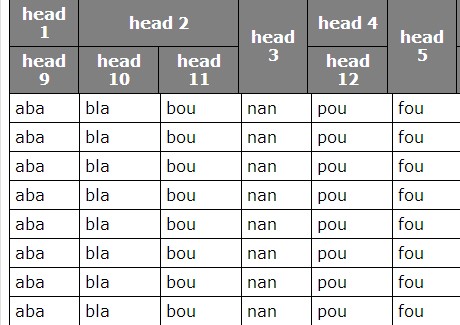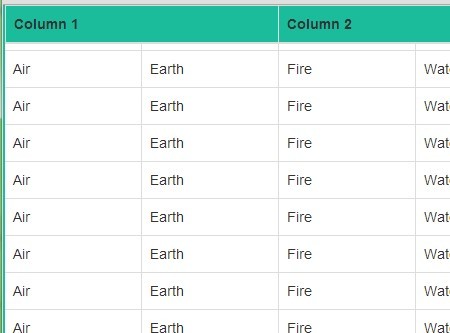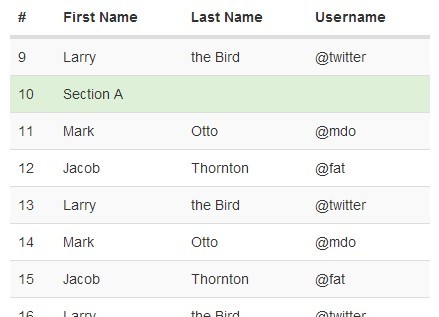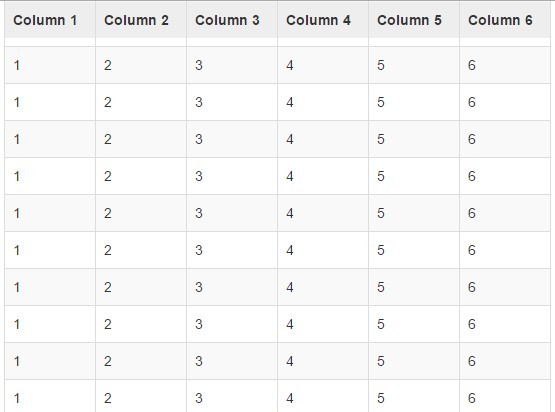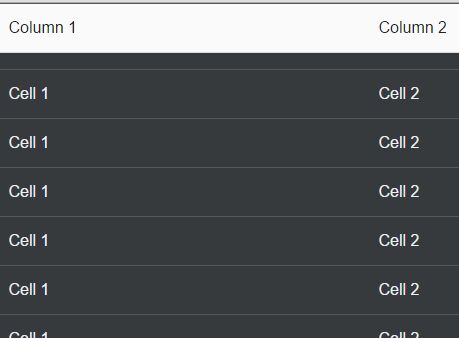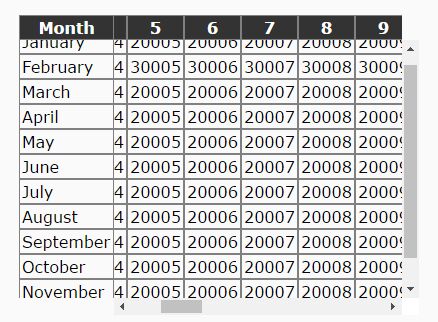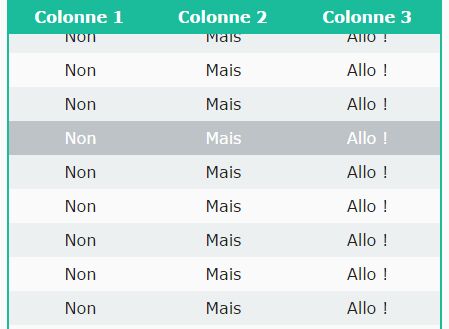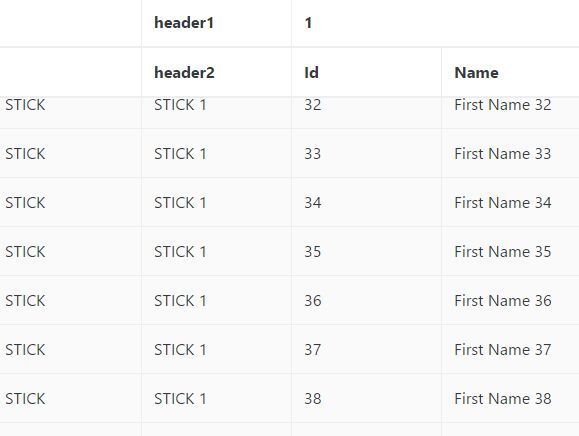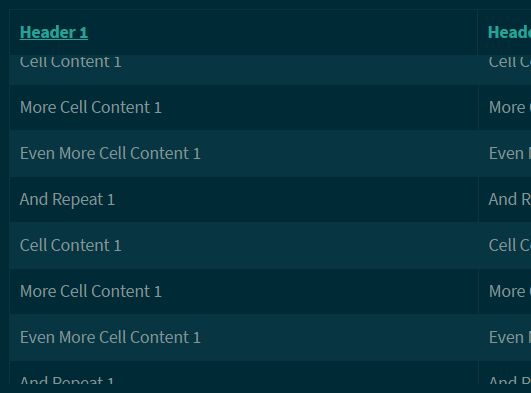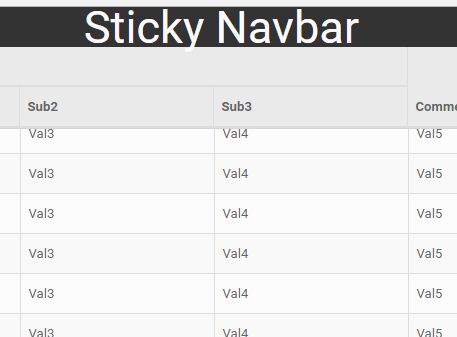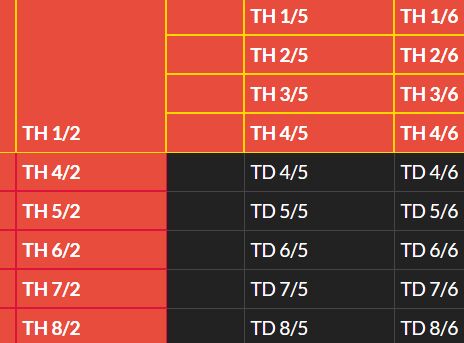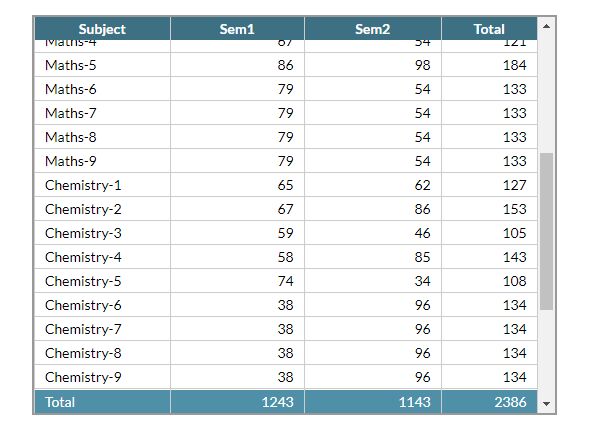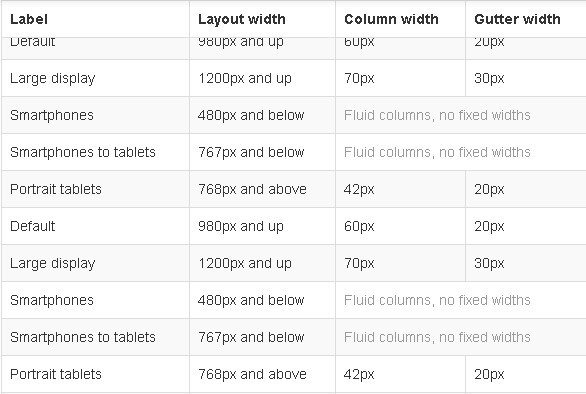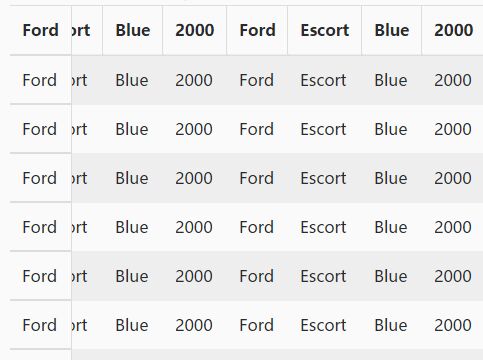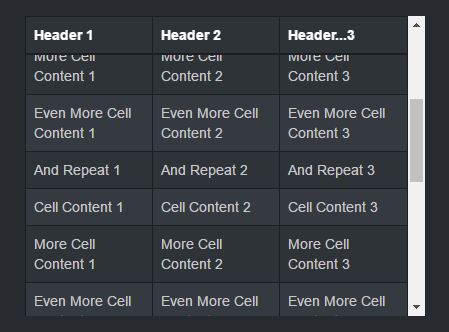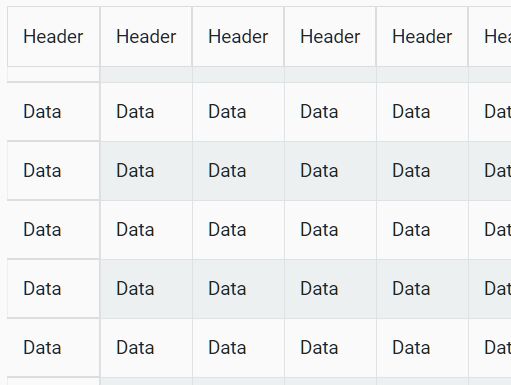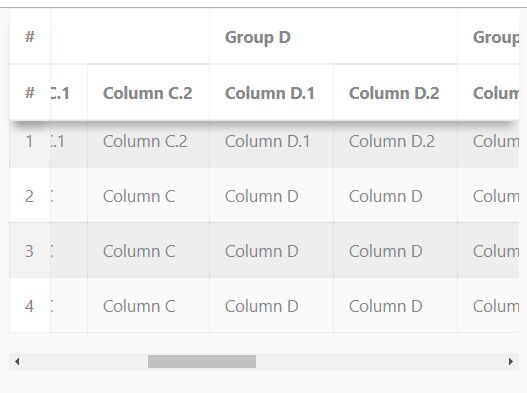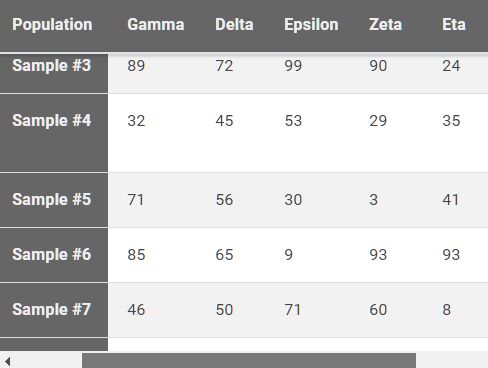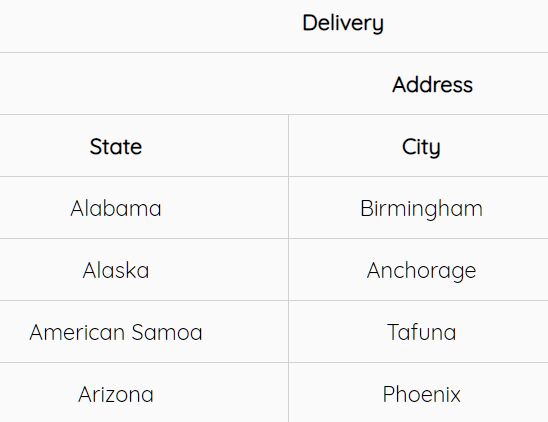uicTable
The plugin's purpose is a very simple but important one: uicTable keeps the header section of a table in place while scolling through the table. By doing this uicTable does not generate exessive overhaed and performs well on all modern browsers (Internet Explorer currently not supported, budge MS Edge works). The only browser that had some performance issues with the full implementation (Safari) is able to handle this task natively via css and therefore is not affected by this plugin with the exception of getting set a single css declaration for the thead element of the table.
uicTable supports all kind of table layouts: no matter if the table (or it's colums) has a fixed width or if it is totally flexible according to it's parent container or it's content, the fix header always works as expected. This is also true if the table exeeds the width of it's parent container and needs to be scrolled horizontally. The headers will always stay in place where they should be.
How does it work?
in Safari things are simple: the thead element gets the new css declaration position: -webkit-sticky; top: 0px; what makes it stay in place without any further treatment. That's it!
Other browsers currently do not support the new position:sticky css declaration even not with a vendor prefix or at least not on thead or th elements (Firefox). So in these browsers the plugin unfolds it's magic: the content of every th element gets wrapped into a div element that itself is placed within the th element. Instead of the original th -> content structure, the element's hierarchie is th -> div -> content after applying the plugin. The divs get applied the most common css declarations from their parent's th element's computed styles whereas these css rules will be reset to their initial values for the th-elements . This will work in a lot of cases. For more sophisticated layouts the set of considerd css declarations can be set in the plugin's config. See below for some hints how to specify these rules.
In a second step the table is wrapped into a div container that is placed within the initial table's parent element. Now when scrolling, the plugin tracks the scrollTop-value and adjusts the top property of the divs in the opposite direction. Because the divs have position:relative applied, moving the divs does not affect any other sizing or placements. The original th elements do scroll out of view while the divs stay on their initial position.
How to use?
- Download the plugin.
- Include jQuery and uicTable in your project
<script src="path/to/file/jquery-1.10.1.min.js" type="text/javascript"></script> <script src="path/to/file/uicTable.js" type="text/javascript"></script>- Apply plugin to an html table.
$('table').uicTable();- That's it!.
If you want to provide some more css rules than the initial ones that should to be transferred from the th elements to the divs use the following config.
$('table').uicTable({ additionalCSS: ['height', 'text-align', …] });If you want to override the initial set of css rules that should to be transferred from the th elements to the divs use the following config.
$('table').uicTable({ css: ['height', 'text-align', …] });CSS rules that do inherit (i. e. color) and don't break the layout don't need to be transferred, others (i. e. box-shadow) need to be transferred to apply (only) on the divs. To find out the declaration's identifiers, a view into the computed styles within the developer's section of the browsers can help. For example it is not possible to transfer the border property by just providing border. Instead it is needed to provide border-top, border-right, border-bottom, border-left for Chrome, and border-top-width, border-top-color, border-top-style, border-right-width, border-right-color, border-right-style, border-bottom-width, border-bottom-color, border-bottom-style, border-left-width, border-left-color, border-left-style for Chrome and Firefox.
Author
Ole Manshardt

